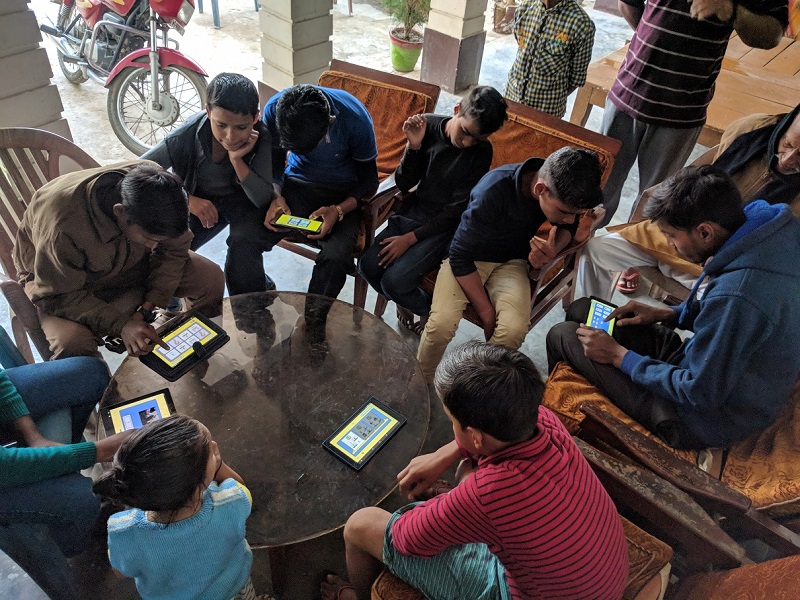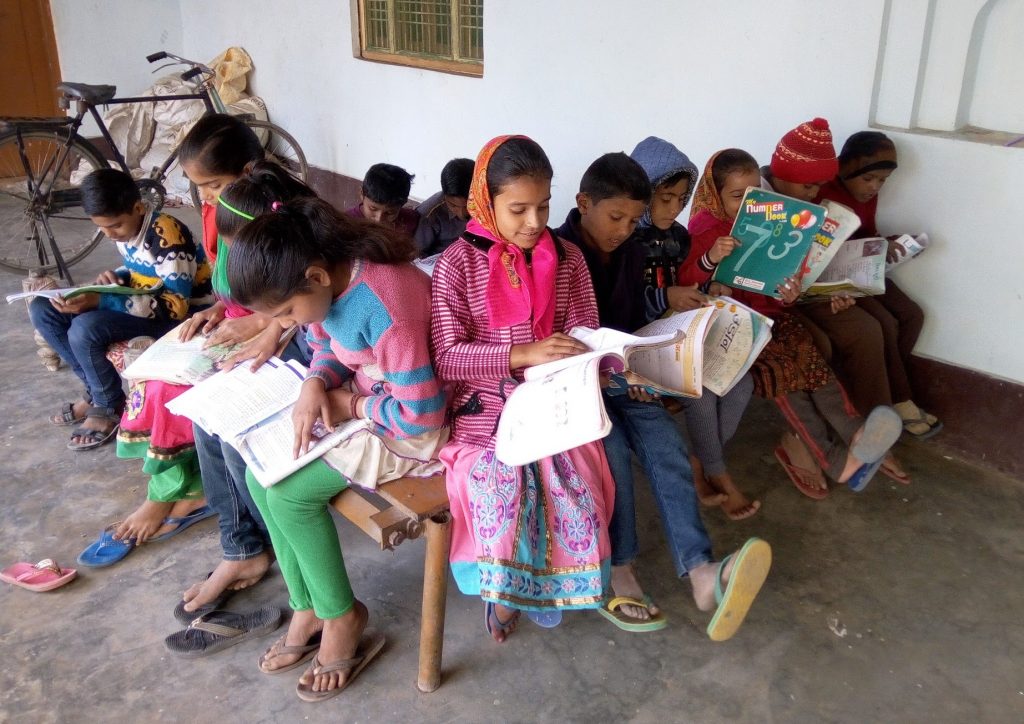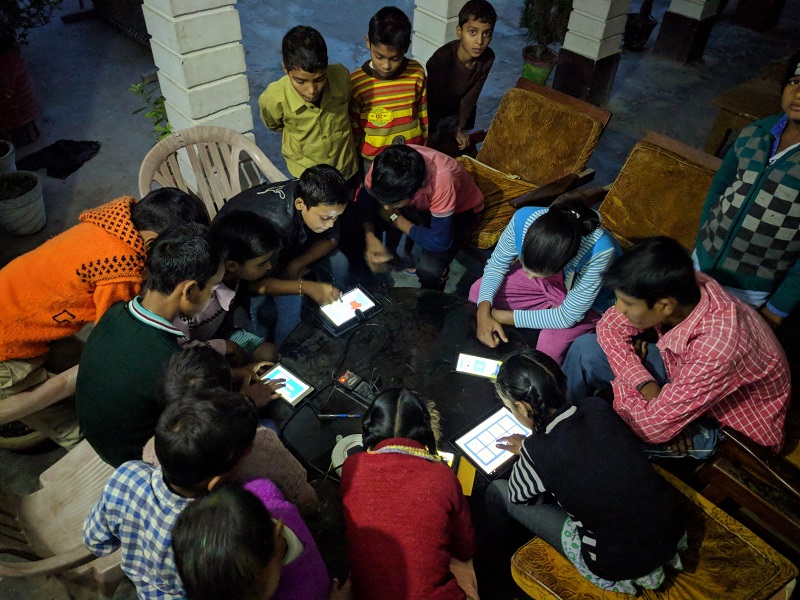Our early pilots in California and India have been critical in shaping our dev plan, while also indicating that there is a strong “product-market” fit between our vision and the reality that many children are struggling with.
Santa Barbara, CA
While our current content emphasizes guided learning, we had started with a free-choice format in our early pilots with pre-kindergarten children in Santa Barbara, California. These took place in schools with a large proportion of English Language Learners (ELLs) coming from families where parents are not proficient in English.
The children had free choice in how they engaged with our content (with a limit of about 10-15 minutes per day). From informal observations, we saw that children were engaged in many of our vocabulary exercises. However, we noticed that the kids spent most of their time on their favorite content modules and chose to ignore others, which made it difficult to achieve the overall learning objectives. On the positive side, we noticed that they were very engaged with our illustrated audiobooks, even though most of them did not know how to read yet. They quickly settled on favorite stories, which they played over and over again.
It was clear from these pilots that we needed to develop a guided lesson plan to make sure that children were exposed to the entire gamut of content required to go from zero to reading.
We also got valuable feedback from teachers. Their wish list included reports on the individual progress of each child, including pointers on areas that need more attention.
These pilots made it clear that digital content relying heavily on imagery and audio had significant potential as an enabler of literacy, and also that our priorities should be to develop a guided lesson plan for the children, and analytics for teachers and facilitators.
Ballia, Uttar Pradesh, India
Based on the feedback from the Santa Barbara pilots, we developed a set of 10 guided lessons and ran a pilot in India, in a small village in Ballia district in Uttar Pradesh. This pilot ran for two months in early 2018, with the content reaching around 70 children in the village. Most children in this group were school-going children (between 4 to 12 years old) with limited exposure to English from their schools (about 20% with close to no exposure, 20% with good exposure and the rest in between), and had parents with little to no education and limited financial means. The content was deployed as an Android app on a limited number of mobile devices (four tablets, and occasionally a couple of smart phones), and Internet connectivity was not required. We used this pilot to test out our model for self-learning with relatively unskilled facilitators: these were volunteers who were in charge of ensuring that the children register on the device, take turns in accessing the devices, and don’t treat the devices too roughly! The training required for these volunteers was therefore minimal.
We found that the children were very engaged with the content and helped bring more kids via word of mouth as the pilot continued. Even with the limited number of devices, the children showed up regularly and waited patiently for their turn. They seemed to be hooked, and continued to ask for more time with the devices.
The importance of guided lessons was also apparent. The kids had access to both the guided lesson plan in GLEN Learn and the free form content in our content library, but most of them chose to work with the guided lessons.
We did not have detailed analytics in place for these pilots, but we did notice that some of the children were moving quickly through the lessons with a lot of trial and error. We had always intended to add in regular assessments in our lesson plan, but it became clear from this pilot that this task should be at the top of our list. Additionally, from the literature on Instructed Second Language Assessment, we know that repetition and strengthening of existing skills is key to learning, so that a quick pass through the lessons is of limited value. These observations guided us to our current architecture for GLEN Learn, where we gate the content with frequent assessments and adaptive skill strengthening modules to provide a personalized learning experience aimed at ensuring that the child is actually absorbing the content.
The bottomline
Our pilots have confirmed a strong need for early English literacy digital content such as ours, both for ELLs in the US and for children in developing nations for whom English literacy can be the key to escaping poverty. We are convinced by these experiences that the following key features that we had identified early on are indeed the key to scaling early English literacy: high-quality content on low cost mobile devices, along with a self-learning model requiring minimal adult supervision. Now it is up to us to continue to flesh out this vision, and we hope that you will join us on this adventure!




